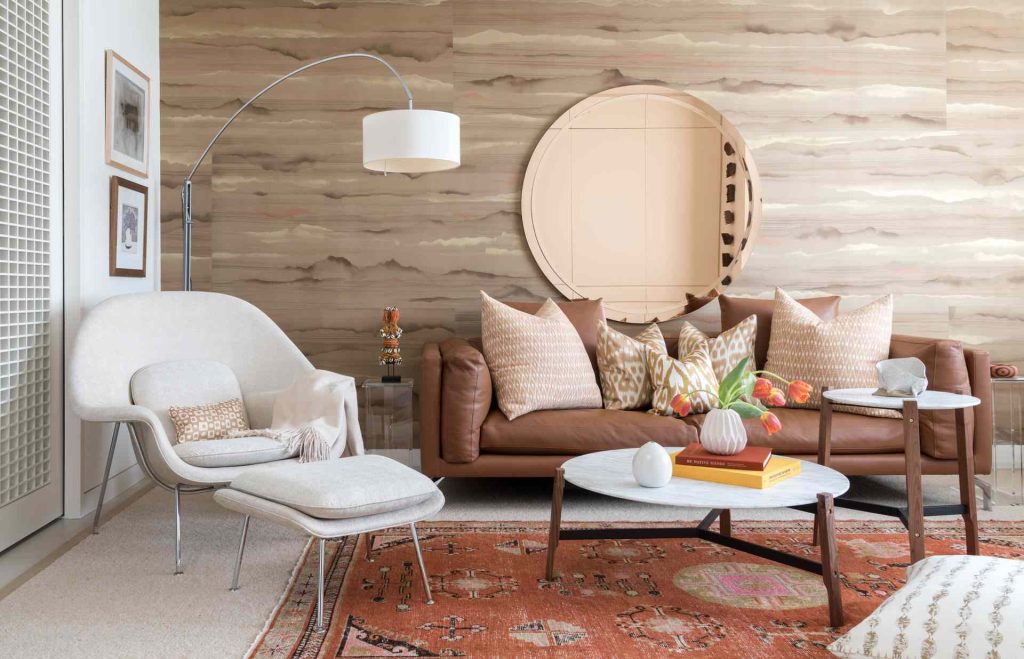There are many different lighting designs that can be used in different rooms of the home – whether it’s your bedroom, dining room, study or kitchen.
Different lighting designs appeal to different people based on their tastes, personal style and needs.
Whether you want something classic and modern or prefer something more eclectic with a touch of vintage appeal; there are many options available to you as far as lighting designs go.
The Living Room Lighting Designs
Brighten your space with Natural Light
The living room is a space where we want to feel welcome and warm. To accomplish that, you can use light sources such as natural sunlight or lamps to provide an inviting atmosphere.
Natural light is one of the best ways to provide that sense of warmth as it mimics daylight and is softer in color.
If you don’t have a lot of windows in your home, consider using lamps or other types of incandescent lighting. This could involve putting up floor lamps near sofas or furniture pieces to create a more intimate setting.
For those who are concerned about energy efficiency, LED lighting is also a great option for the living room as it provides good light without taking up too much electricity.
Natural Light: Brighten your space with natural light by opening blinds and curtains to give off a warmer glow. You may also want to consider installing skylights on the ceiling or large windows if possible.
Lamps: You can use lamps or other types of incandescent lighting like halogen lights if you don’t have enough natural light in your home (or don’t have any at all).
LED Lighting: For those interested in going green, LED lights are also a perfect solution for providing good light without taking up too much electricity – plus they last longer and maintain their quality over time.
The Study
Utilize Task Based Lighting
The perfect lighting design for a study is task based. This means that it should light up the area where you need to focus on a specific task.
For example, if you’re doing homework, your desk lamp should be very bright and provide enough light so that you can do your work without straining your eyes.
If you’re reading a book or magazine, the light from your ceiling fixture should be softer and not too strong so that it doesn’t cause eye strain while you’re focusing on something else.


The Kitchen
Go for Bright and Natural Light
Kitchens are often the busiest room in the house. That’s why it’s important to make that space as functional, welcoming and comfortable as possible for both cooking and dining.
The best kitchen lighting design combines natural light with a warm glow from under-cabinet fixtures, task lights or pendant .
amps, all of which can be used to highlight the area where you’re working. The idea is to use versatile lighting designs that give off a bright and natural light at the same time, so you don’t feel like you have to choose between using one or the other. This will also ensure that your kitchen has an inviting atmosphere that feels clean and fresh no matter what time of day it is.


Conclusion
There are so many different ways to light a room and the design of the room itself will determine what type of light is most appropriate. Study rooms are best lit by task-based lighting, living rooms have the most natural light, and kitchens have a little bit of everything.
No matter what room you’re designing, make sure you have the right type of lighting for your space.
More Posts
Enhance Your Space with a Paper Floor Lamp
Paper floor lamps have emerged as a popular choice in contemporary interior design, blending functionality with artistic expression. These lamps,...
Unique Cream Frisbee Shaped Travertine Chandelier
The Cream Frisbee Shaped Travertine Chandelier combines functionality with artistic design. Its distinctive circular form resembles a frisbee, offering a...
Enhance Your Villa with Stunning Outdoor Lights
Outdoor lighting plays a pivotal role in enhancing the functionality and aesthetic appeal of residential properties, particularly villas. It serves...
Brass Bird Wall Lamp: A Chic and Unique Lighting Option
The Brass Bird Wall Lamp is a unique lighting fixture that combines functionality with artistic expression. This lamp is not...
Add Warmth to Your Space with a Creamy Pear Table Lamp
Creating a warm and inviting atmosphere in your home is essential for fostering comfort and relaxation. Warmth in a space...
Silk Wabi-sabi Chandelier: Embracing Imperfect Elegance
Wabi-sabi is a Japanese aesthetic that celebrates the beauty found in imperfection, transience, and the natural world. It is a...


